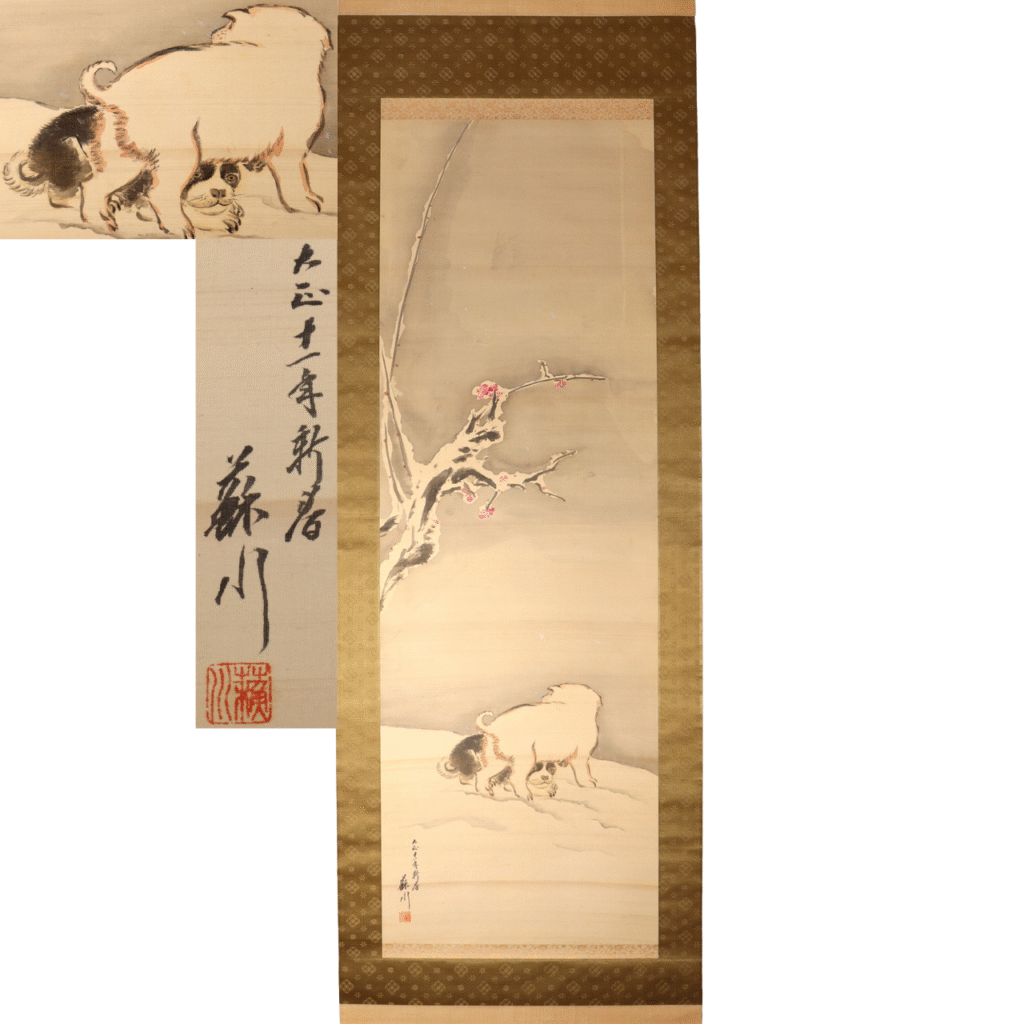
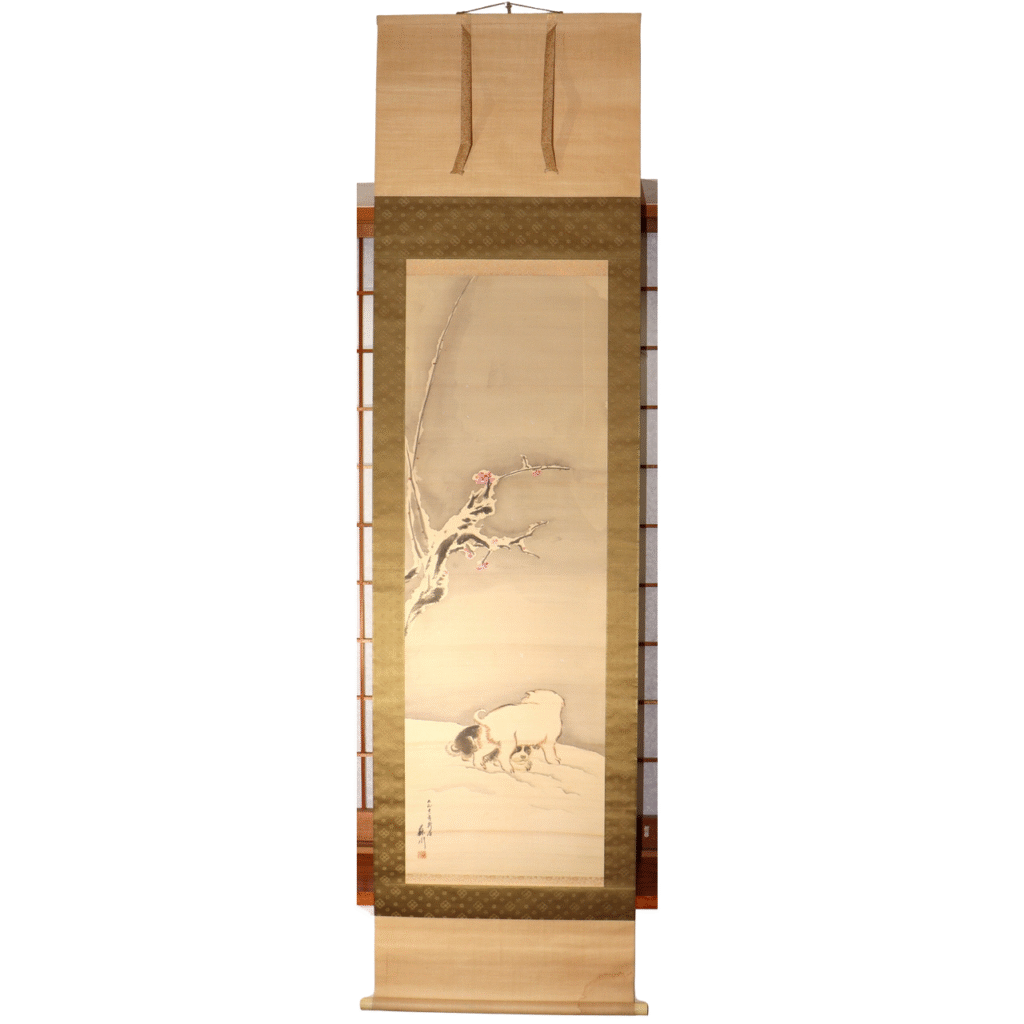
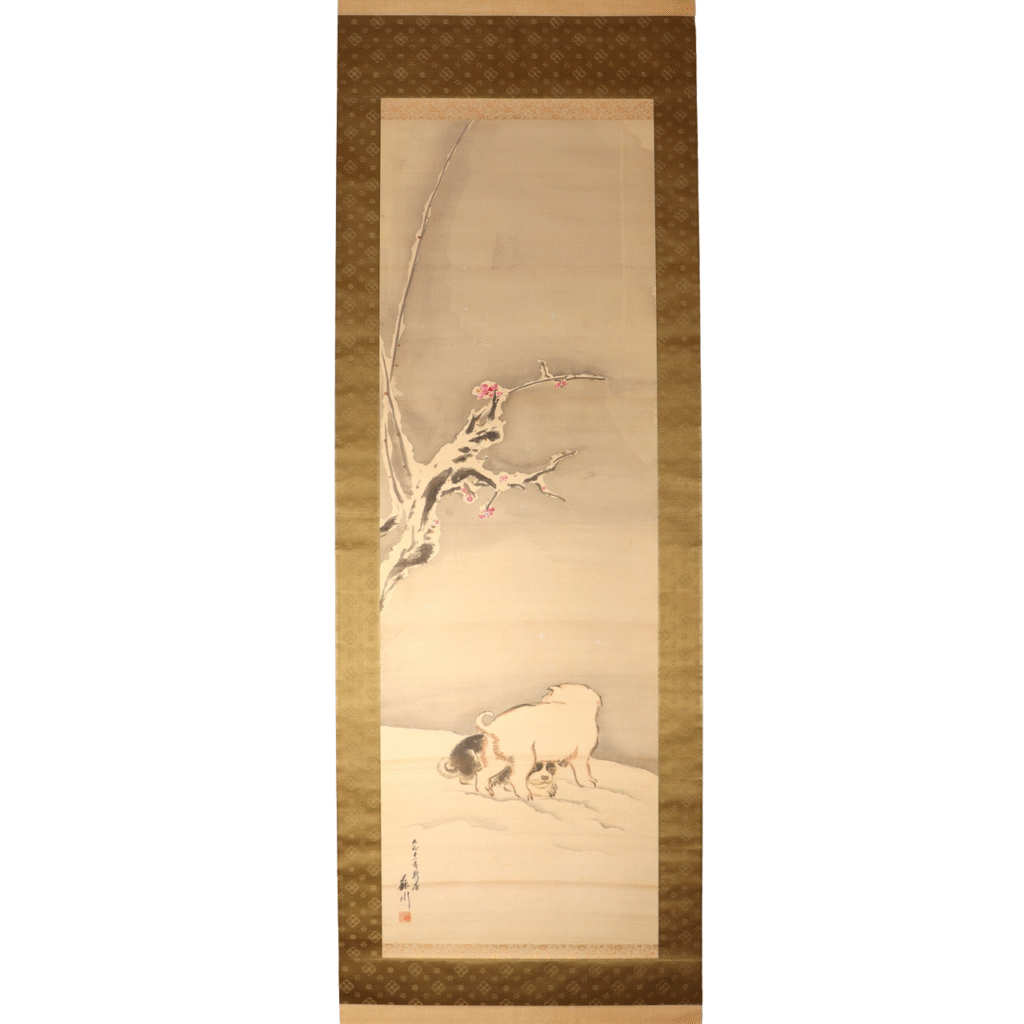
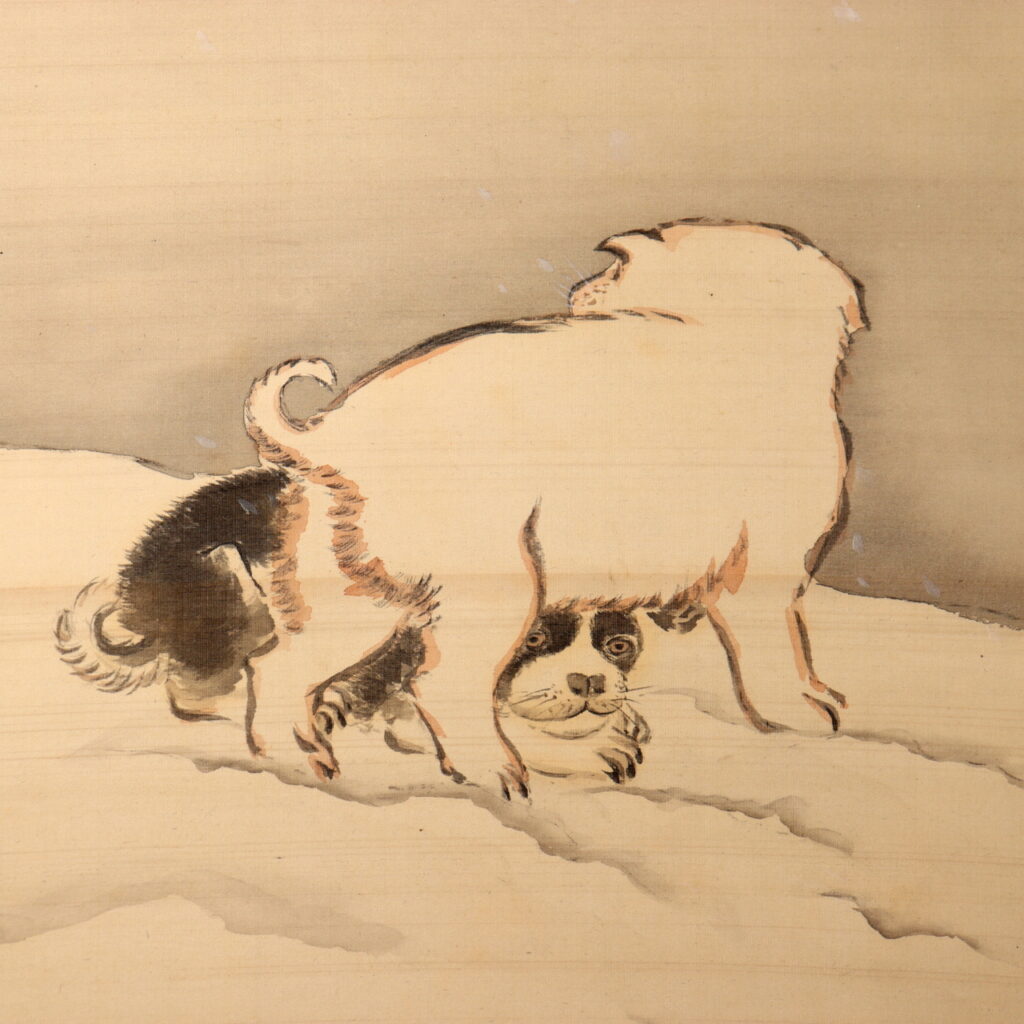
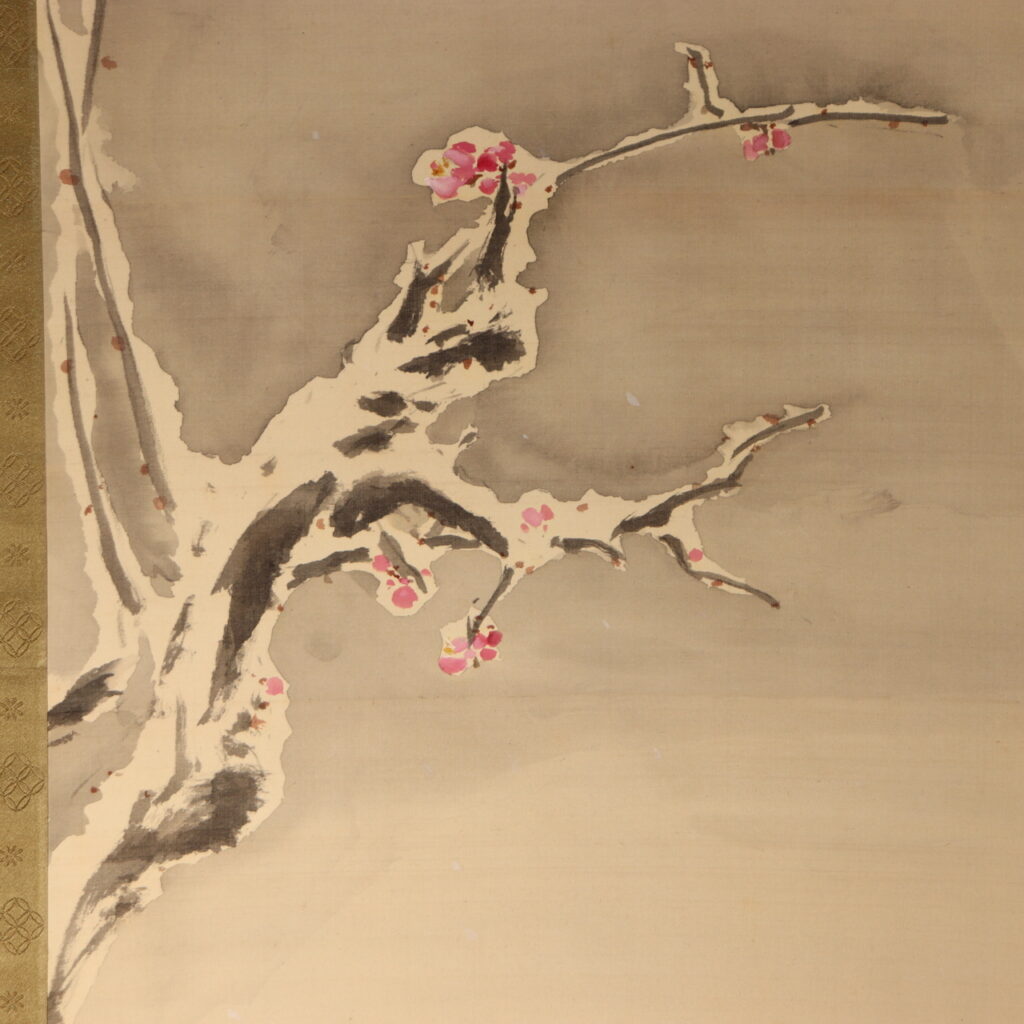
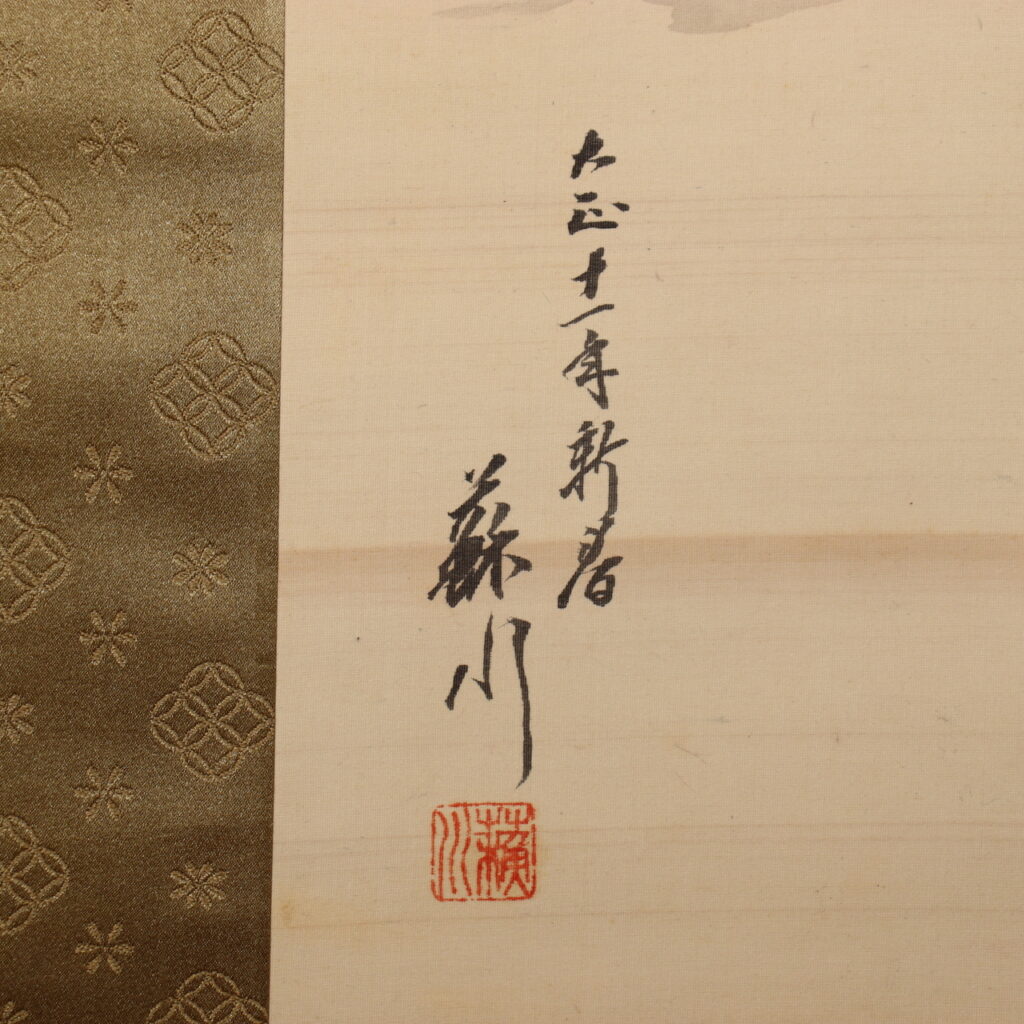
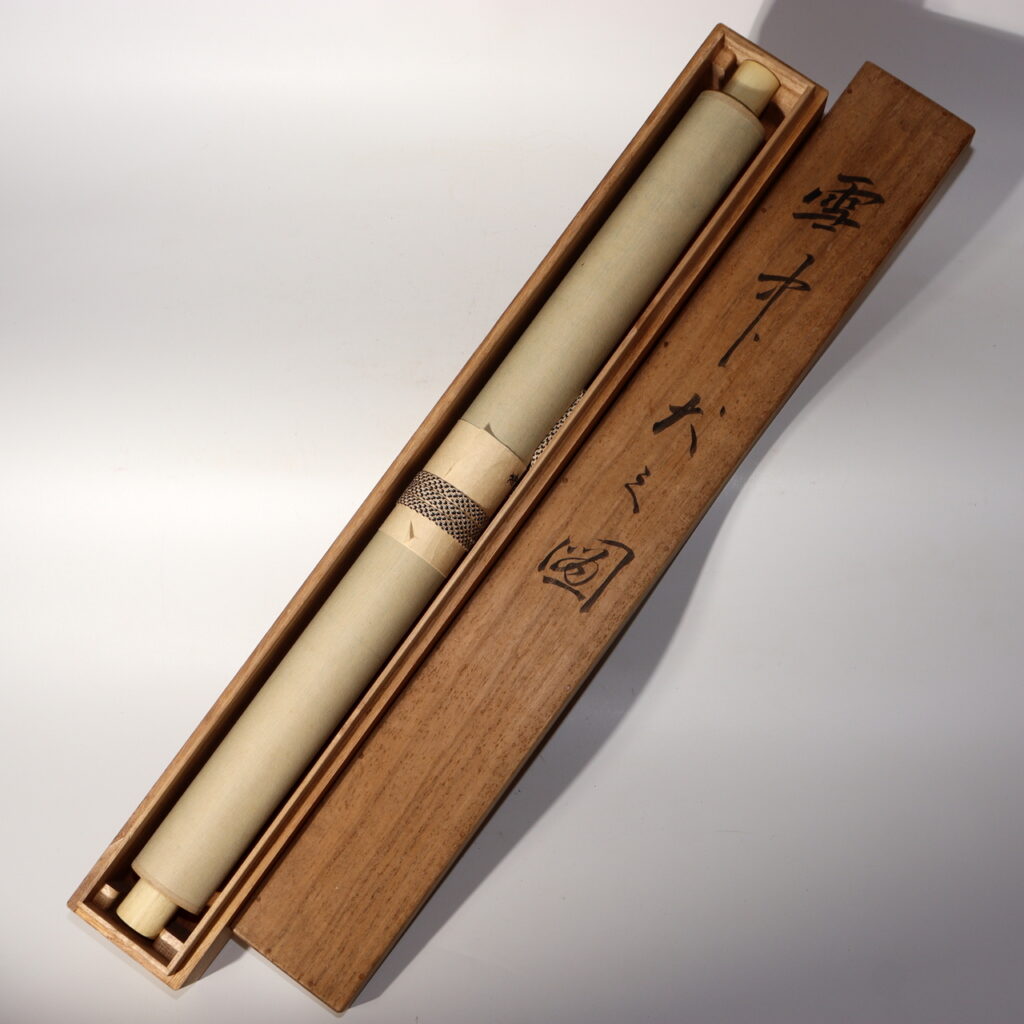
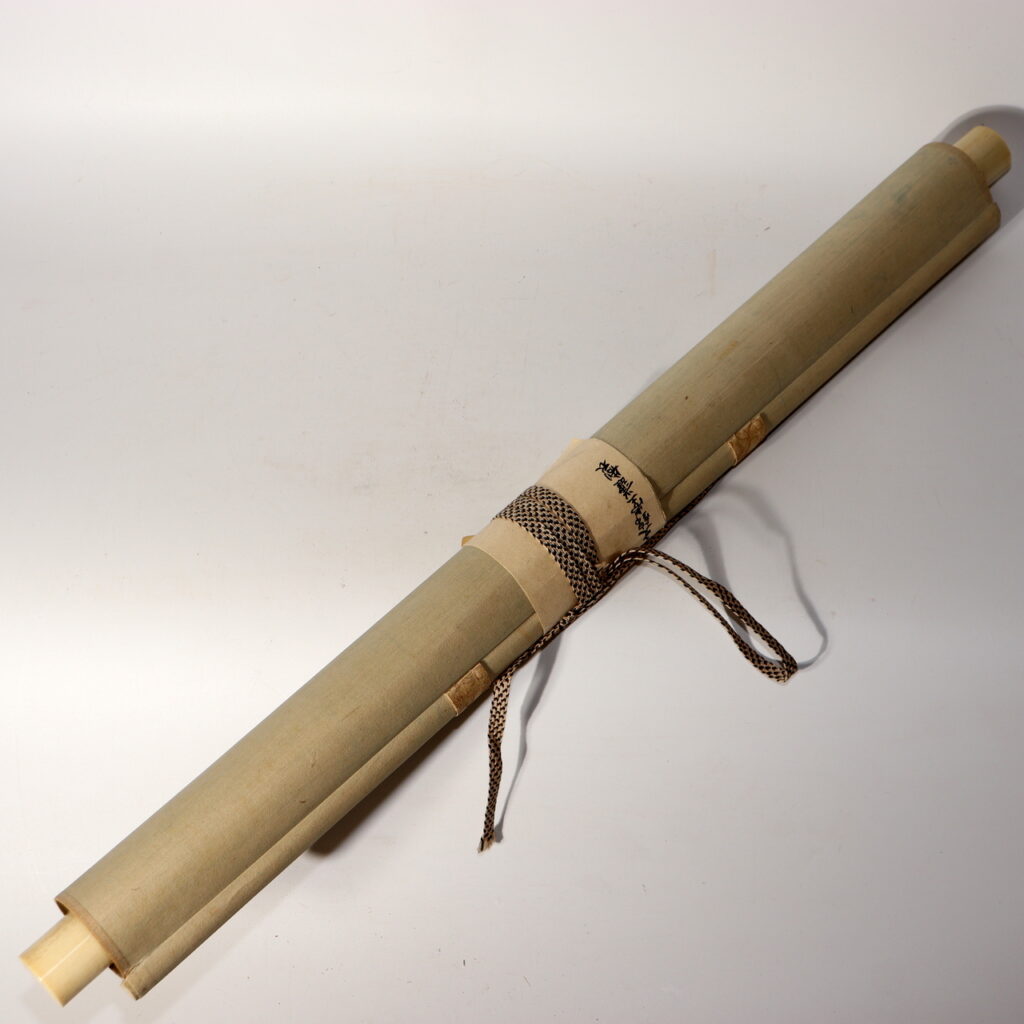
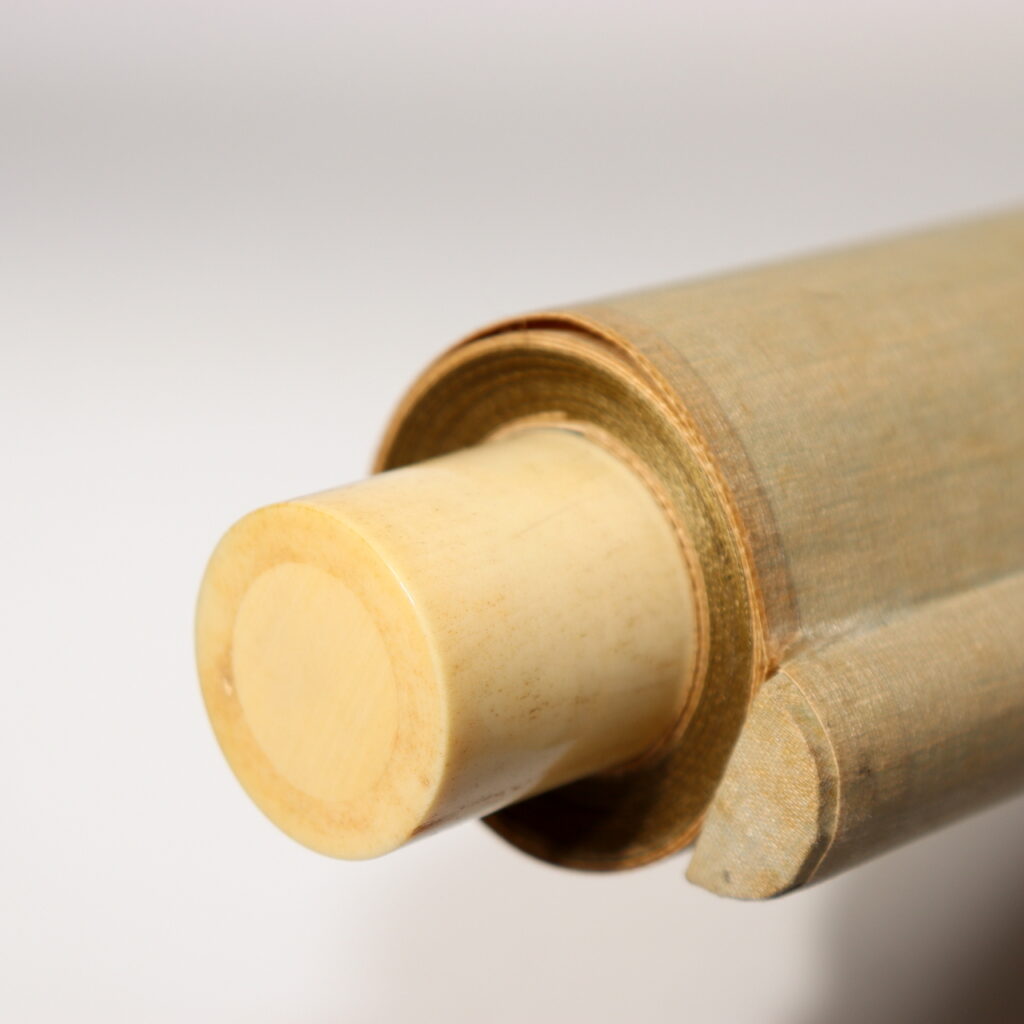
Some artworks speak in whispers—this Japanese antique hanging scroll, dated Taisho 11 (1922), is one such piece. Portraying two dogs nestled beneath a blooming plum tree in a snowy landscape, it captures a fleeting seasonal moment with poise, silence, and an air of quiet dignity. For collectors and admirers of Japanese antiques and animal painting traditions, this scroll is a visual poem composed in ink and snow.
The Story Behind This Scroll
This hanging scroll, or kakejiku, originates from the early 20th century, a period when many Japanese artists still drew deeply from classical schools while exploring personal expression. The composition and technique clearly reflect the enduring legacy of the Maruyama-Shijō school, a Kyoto-based style known for its lyrical blend of realism and refined naturalism.
Founded by Maruyama Ōkyo and further developed by Shijō painters like Matsumura Goshun, this school brought a new dimensionality to traditional painting by emphasizing observation from life—especially in animals, flora, and everyday scenes. The two dogs here, painted with elegant brushwork, seem caught in a moment of pause: one gazes outward toward the viewer, while the other looks away. This asymmetry imparts both rhythm and realism, a hallmark of the school.
Though the artist—signed as “Sosen” (蘇川)—is not widely documented, the compositional balance, brushwork finesse, and seasonal sensibility suggest that he was a trained regional painter steeped in the Maruyama-Shijō lineage.
What Makes This Piece Remarkable
- Composition & Symbolism: The pairing of dogs and a plum tree in snow evokes layered symbolism—plum blossoms herald resilience and renewal, while dogs represent loyalty, warmth, and connection to the domestic world.
- Signed and Dated: The scroll bears the date Taisho 11 (1922) and is signed Sosen, adding historical and personal dimension to the work.
- Naturalistic Style: Delicate pigment washes and fluid outlines demonstrate an understanding of poetic realism, typical of Kyoto-trained artists.
- Contrast in Gaze: The positioning of one dog facing forward and the other looking aside brings visual dynamism and psychological depth.
- Traditional Mounting: It comes with an elegant silk brocade mounting and an original wooden storage box (tomobako) bearing the title 「蘇川 雪中双狗図」(“Sosen – Two Dogs in Snow”).
This scroll is not merely a decorative object—it is a window into a gentle winter moment, framed by artistic philosophy.
Why Collectors Value Works Like This
In the global market for Japanese antiques, artworks from the Maruyama-Shijō tradition remain highly respected for their quiet strength and timeless appeal. Collectors of animal-themed art, hanging scrolls, or Taisho-period Japanese painting will find in this piece a bridge between classical technique and modern sensitivity.
Whether displayed in a tokonoma alcove, used to enrich a wabi-sabi interior, or studied as part of a Japanese art collection, this scroll evokes calm, seasonality, and reverence for nature—all central tenets of Japanese aesthetic life.
A Legacy of Stillness and Snow
This 1922 hanging scroll of two dogs in snow is a small yet powerful testament to the enduring power of seasonal beauty and animal presence in Japanese art. Echoing the traditions of the Maruyama-Shijō school, it offers a gentle meditation on stillness, life, and gaze—timeless qualities that speak across generations.
🌀 If this item has sold, we invite you to explore our full collection of antique Japanese hanging scrolls and art:
🔗 Browse our collection